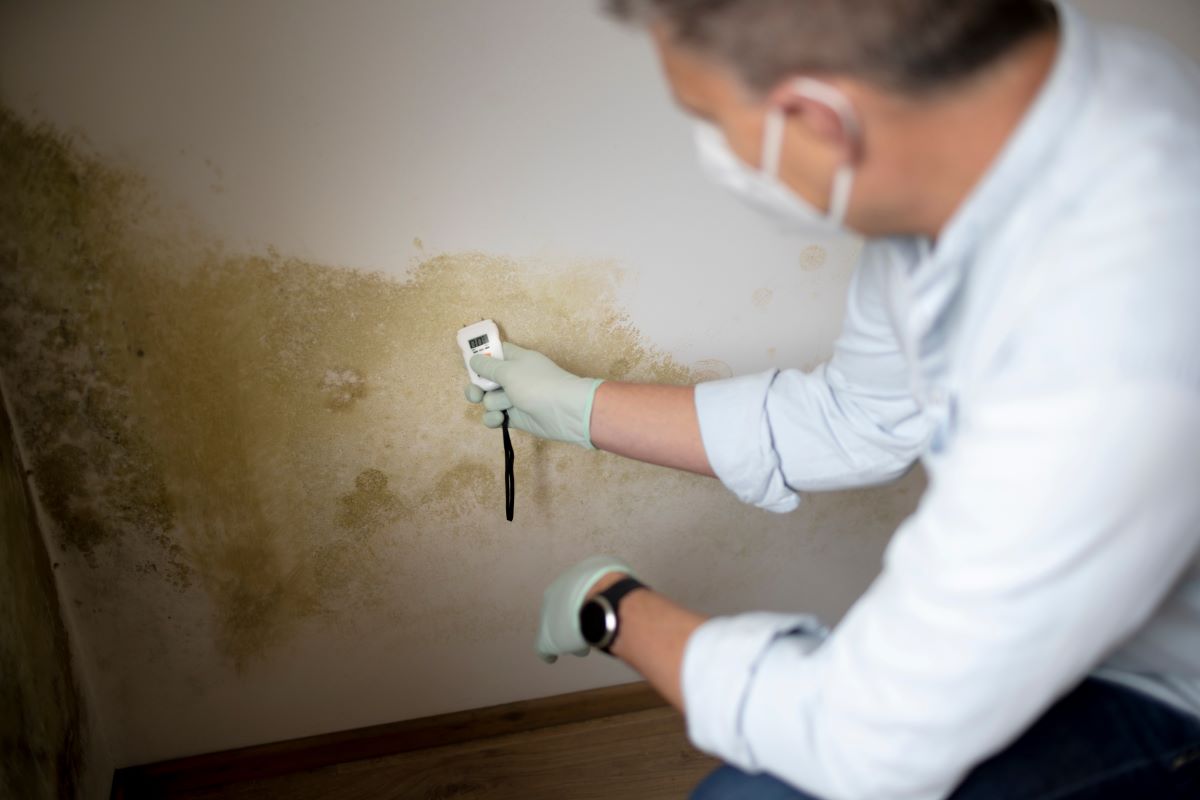Do you suffer from moisture in the ground floor? You're not alone: in Flanders many first floors suffer from moisture problems such as condensation, ventilation problems, rising damp, damp floor, leaks or a musty smell.
Recognize moisture on the ground floor
A first floor is an important place in the home. It is the place where you live, cook, do your laundry and pee, or perhaps where you do your hobbies. In other words, the ground floor is a place where you should like to be and where you'd rather not moisture problems have.
An ideal humidity level for a ground floor is between 40% and 60%. Is the value greater than that? Then chances are that sooner or later you will experience moisture spots and problems. You can usually recognize an excessively damp ground floor by the following symptoms:
- Colored stains on the wall
- Mold spots
- Loose paintwork, wallpaper or grouting
- A musty and unpleasant odor
- Dripping on the windows and walls
- …
If you notice these issues in your ground floor, it's a good idea to get a moisture expert engage
Consequences of a damp ground floor
If you notice the previous signs in your downstairs but do not intervene, it can lead to all kinds of negative consequences. We list the most important ones:
- Consequences for your health. Examples include rashes, headaches or regular respiratory infections.
- Implications for the climate at home. A humid room feels cooler is harder to heat. You will use more energy to get to a comfortable temperature.
- Consequences for your home. Moisture in ground floors not only creates an unpleasant odor, it can also damage your furniture and home.

Causes of a too damp ground floor and their solutions
There are several reasons for downstairs moisture, each with its own approach. It is recommended that a moisture expert in order to determine the exact cause. Once the exact cause is known, a proper solution anticipated. The most common causes are:
1. Condensation moisture
Condensation is a common cause of damp ground floors, as condensation is often caused by human actions. Examples include breathing or perspiration from occupants. Drying laundry or mopping can also increase humidity. In addition thermal bridges be the culprit.
The ideal solution to condensation moisture is to make your ground floor as good as possible ventilate. This can be done by taking action on your own, but also a mechanical ventilation system can help you with this.
2. Rising damp
Also rising damp can lead to moisture on the ground floor. This occurs when there is a problem with or lack of the water barrier, causing groundwater moisture to penetrate the walls of the first floor.
Rising damp is best addressed professionally by having your walls injected.. Then specialists drill holes in the damp walls, then inject them with a moisture-resistant product.
3. Penetrating moisture
Finally penetrating damp to the cause of a damp ground floor. This is moisture that enters through the outside of the house due to (heavy) precipitation and seeps through the interior walls.
Penetrating moisture in the first floor is best controlled by means of facade impregnation, in which a transparent but waterproof layer is applied to the facade.
Get your damp ground floors treated
Are you suffering from downstairs moisture? Don't wait until it's too late. Get guidance from AquaConsult and request your free moisture diagnosis for the first floor.


